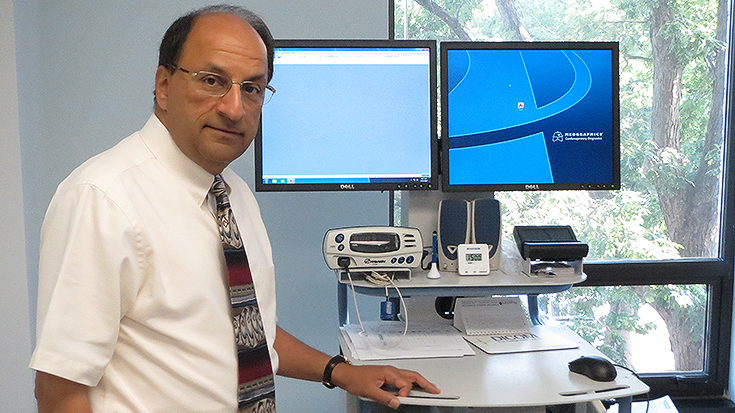
Hospitals are busy and exciting places to work, but if you are longing for a quieter setting where you can work with the same patients over time the physician office may be what you’re looking for. In the following interview, Devin Sareen, MHSA, RRT, RPFT, AE-C, explains how he went from bedside RT to RT department management to a multi-specialty practice called Advanced Pulmonary Critical Care in Alexandria, VA.
When and why did you decide to become a respiratory therapist and where did you get your RT degree?
It was in 1977. While contemplating going to med school I came across a respiratory therapist who talked to me about how I could gain direct health care experience en-route to medical school by becoming an RT. So I studied at Northern Virginia Community College to get an AAS degree in respiratory therapy.
How long did you work as a traditional RT and what did you most like about that role?
I worked for about three years at several hospitals in general and intensive care settings while studying for an undergraduate degree, before finding my first position as manager of cardiopulmonary services in 1980. In both staff and management roles over the years, I enjoyed helping people. It has been very fulfilling to help relieve patients’ breathing difficulties and to realize that you can make a tremendous difference in a person’s life!
When and why did you join the pulmonologist practice, and what did you have to do to get the job?
About nine years ago, when a successful staffing company that I had founded a decade or so earlier began to have decreasing business volume due to changing market conditions, I came across an ad for someone to do pulmonary function testing and CPET on a part-time basis at a nearby multi-specialty practice. As the company’s business decreased, I was able to work more hours for the practice. That position worked itself into working at a different location for one, and eventually, for a group of pulmonologists.
What are your main job responsibilities?
My main job responsibilities include performing PFTs, CPETs, pulmonary rehab, and asthma education. I also oversee the pulmonologists’/intensivists’ hospital billing, implementation of new health care regulations such as MACRA/MIPS, etc., and work with website development. I function in the role of practice manager.
What are the biggest challenges and the biggest rewards of working in a pulmonologist practice and why?
The biggest reward is that I’m practically my own boss. I answer directly to the group’s president, and have complete autonomy in being able to come in late or leave early when necessary, plan vacations, etc. I’m head of a one-person pulmonary department. The only challenge is that there is limited room for growth.
What advice do you have for other RTs who might see themselves working in the physician office setting?
Working at a pulmonary practice is significantly less stressful than working in the clinical setting at a hospital or at a busy SNF, especially when there are staffing challenges. I am able to give individual attention to each patient, and the practice is able to bill for all services provided by the RT. Though I enjoy a wonderful relationship with my boss and co-workers, I have heard from other RTs whose relationship with their office manager, to whom they answer, is less than pleasant. If someone desires to work in the office setting, I would highly recommend obtaining an RPFT and AE-C credential after the RRT. Having excellent interpersonal skills is very important for this role, as everything you do and say will be heard in this comparatively smaller setting.





